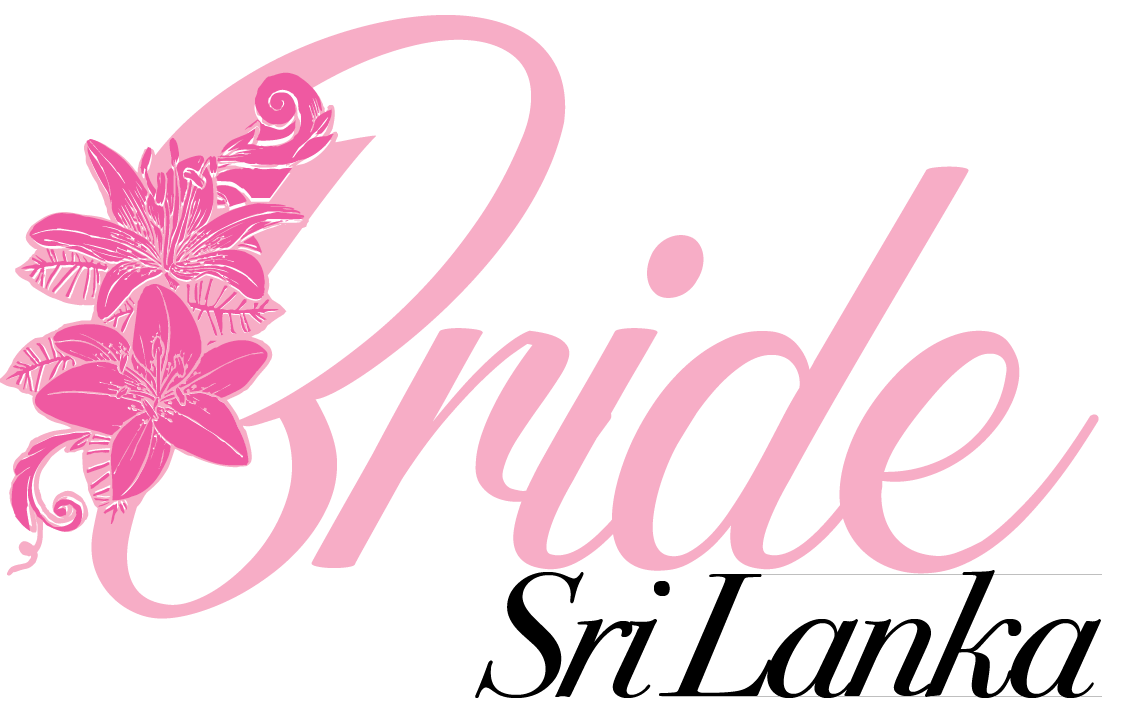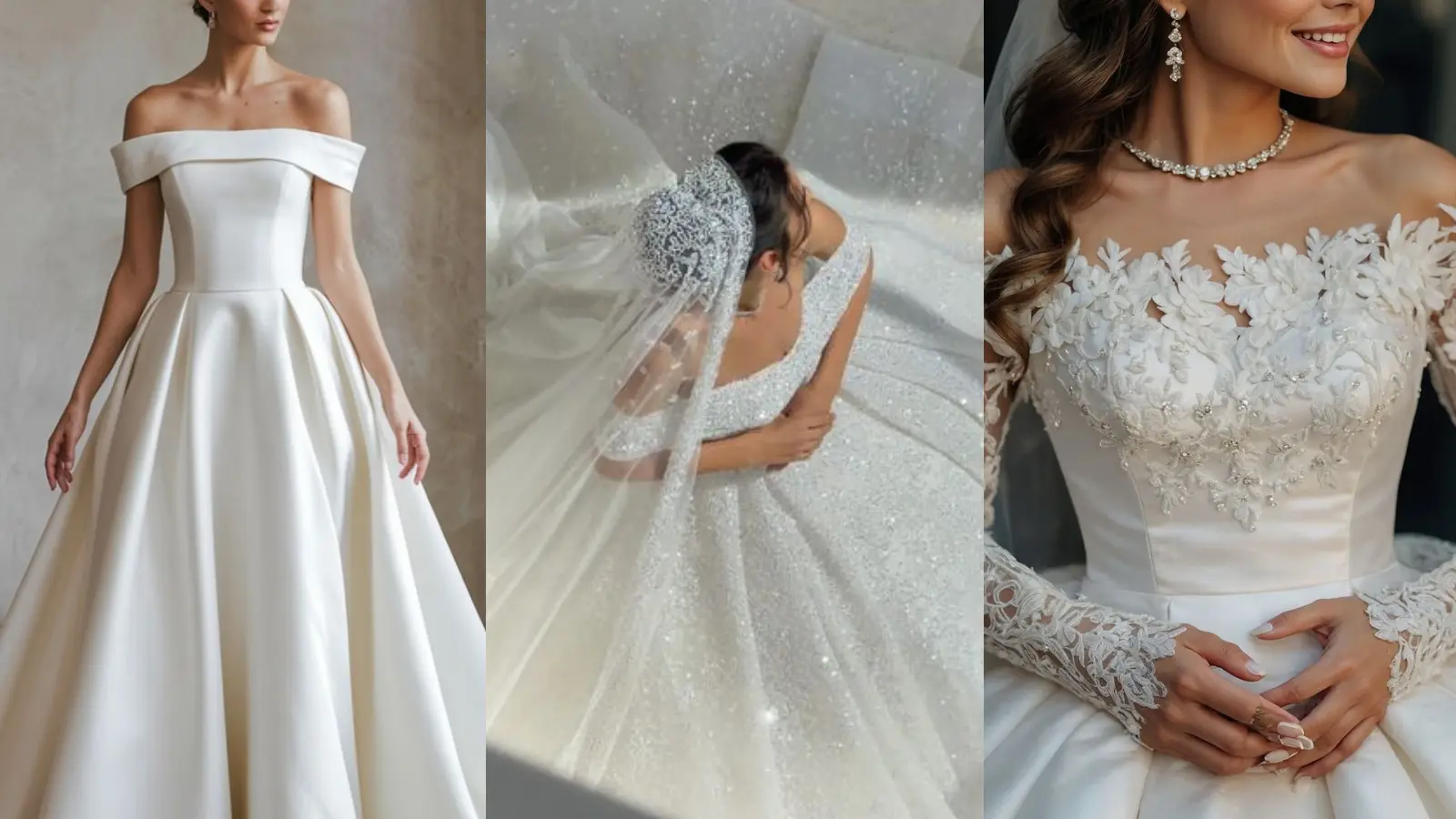Why do brides wear white? | When we picture a bride walking down the aisle, the image that comes to mind almost instantly is of a flowing white gown. But have you ever wondered why white became the color of choice for brides around the world? The story behind this tradition combines history, symbolism, and culture.
Bride in a sparkling white ball gown with intricate beading and a long veil, viewed from above as she gracefully holds her dress.”
The Origins of the White Wedding Dress
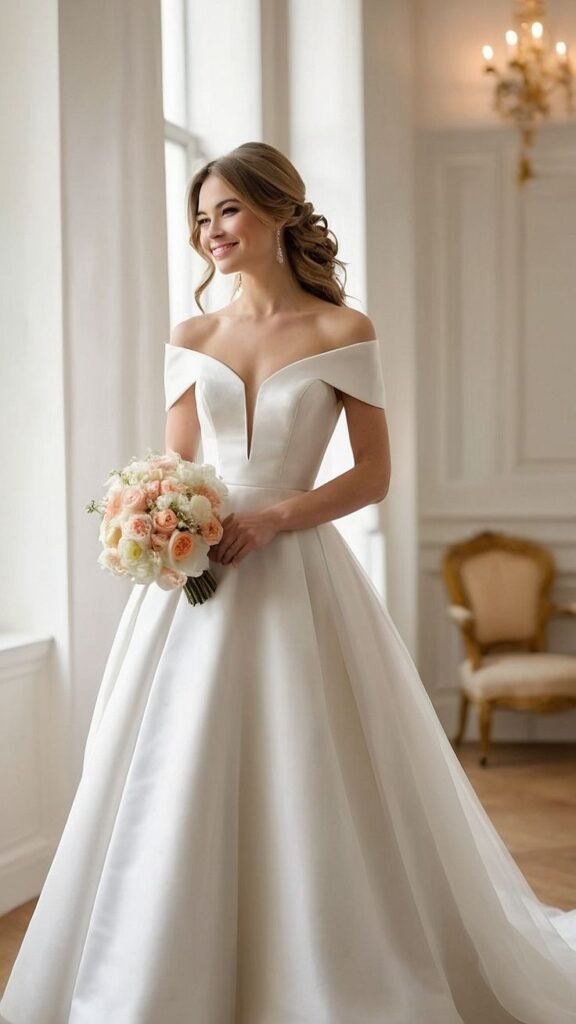
Although white is now seen as the “classic” wedding color, it wasn’t always the case. Before the 19th century, brides wore dresses in any color they liked—even bright reds, golds, or blues—depending on what was fashionable or available to them. Wealthy brides often chose rich fabrics like velvet or silk, regardless of color, to display status and family prosperity.
The white wedding dress as we know it today became popular in 1840, when Queen Victoria of England wore a white satin gown at her wedding to Prince Albert. Her choice of white was unusual for the time but sparked admiration across Europe. Fashion magazines and newspapers spread images of her gown, inspiring women everywhere to embrace white for their special day.
Symbolism of White
Over time, white began to carry strong symbolic meanings:
- Purity and Innocence: White was often associated with virtue and chastity in Western culture.
- New Beginnings: The fresh, clean look of white symbolized a bride starting a new chapter in her life.
- Wealth and Status: In earlier centuries, white fabric was difficult to keep clean, so wearing it reflected a family’s wealth and ability to afford such luxury.
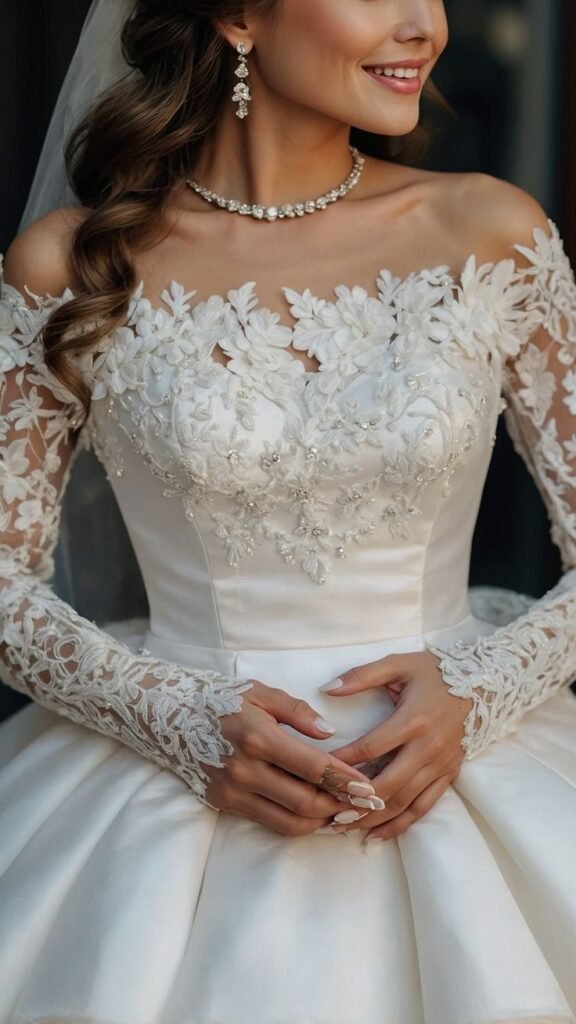
White in Modern Weddings
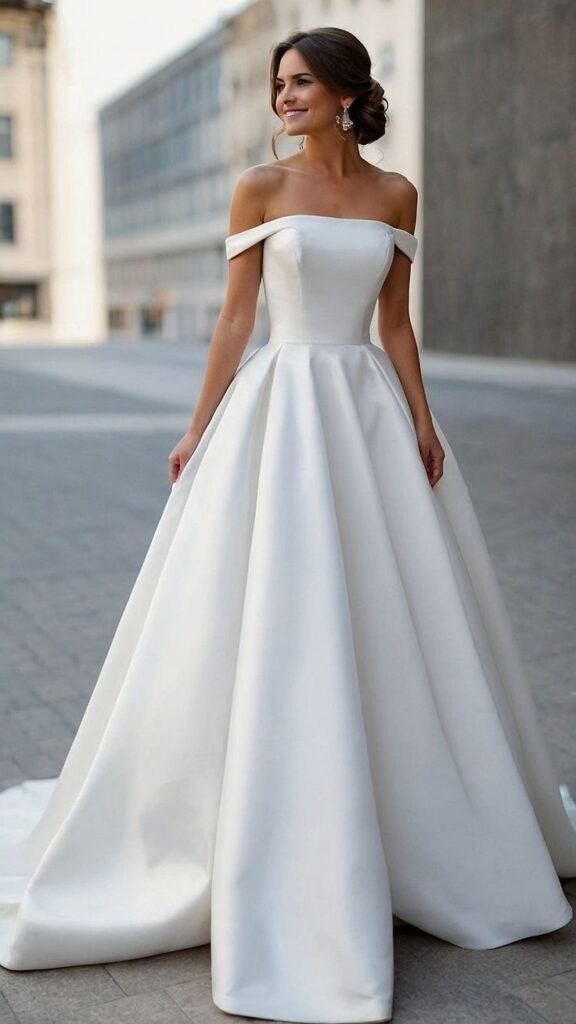
Today, brides wear white not just because of symbolism, but because it has become a cultural expectation and fashion statement. The variety of white gowns—from minimalist satin dresses to elaborate lace ball gowns—allows brides to express individuality while honoring tradition.
At the same time, many modern brides are choosing to reinterpret the tradition. Ivory, champagne, blush, and even pastel-colored gowns are increasingly popular alternatives, showing that the meaning of the wedding dress is more personal than ever before.
Beyond the West: Global Perspectives
It’s also important to note that white isn’t universal. In many cultures, including Sri Lanka and across South Asia, red, gold, or other vibrant colors symbolize prosperity, fertility, and joy. However, the influence of Western fashion means that white gowns are now widely worn in church weddings, often alongside traditional attire for cultural ceremonies.
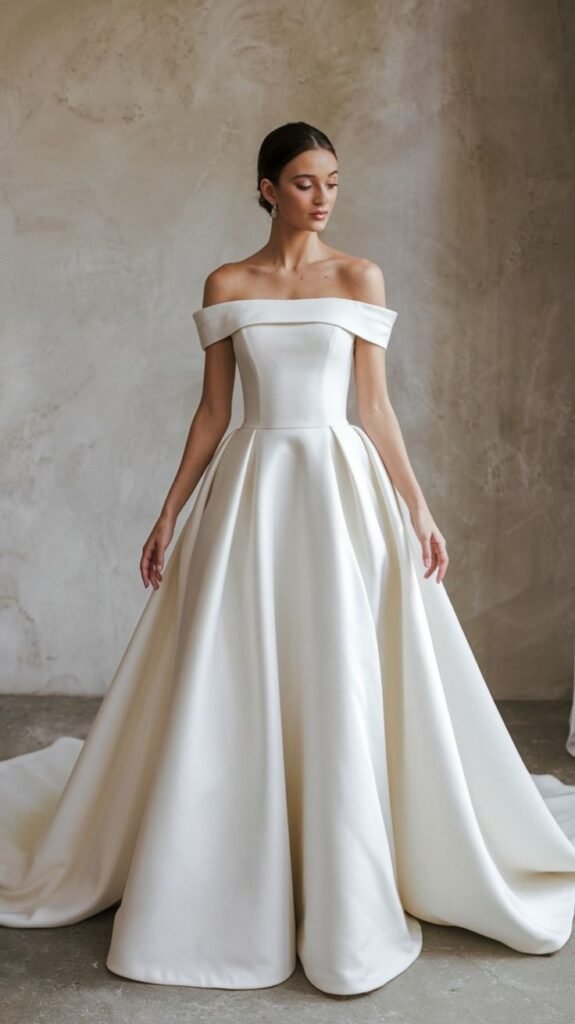
The Bride’s Choice
Ultimately, the color of the wedding dress comes down to personal choice. Whether a bride chooses classic white, a soft ivory, or a bold color tied to her heritage, the gown reflects her unique story. White remains iconic because of its long history, its symbolism, and its association with timeless elegance—but what matters most is that the bride feels confident, beautiful, and herself on her wedding day.

